Enhancing hair follicle regeneration by nonablative fractional laser: Assessment of irradiation parameters and tissue response
April 2015
in “Lasers in Surgery and Medicine”
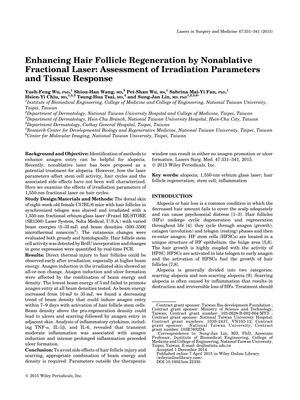
TLDR Using a fractional laser can stimulate hair growth, but the intensity and duration of inflammation are crucial. Too much can cause ulcers and scarring. Lower beam energy and fewer treatments are recommended to avoid damage.
In 2015, a study was conducted on eight-week-old female C57BL/6 mice to investigate the effects of a 1,550-nm fractional laser on hair follicle regeneration. The results indicated that laser irradiation could stimulate hair growth by inducing the active growth phase of hair follicles, known as anagen entry. However, the intensity and duration of inflammation caused by the laser were critical. Moderate, short-term inflammation could induce hair regeneration without causing ulcers, while intense and persistent inflammation led to ulcer formation and scarring. The study also found that the beam density required to induce anagen entry was less than the beam density that induced ulcers. The researchers concluded that to minimize direct thermal injury to hair follicles and to avoid ulcers, lower beam energy and density and fewer treatment sessions should be considered. The exact number of subjects was not specified.
View this study on onlinelibrary.wiley.com →
Cited in this study
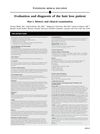
research Evaluation and diagnosis of the hair loss patient
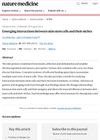
research Emerging interactions between skin stem cells and their niches
Skin stem cells interacting with their environment is crucial for maintaining and regenerating skin and hair, and understanding this can help develop new treatments for skin and hair disorders.
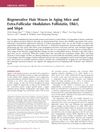
research Regenerative Hair Waves in Aging Mice and Extra-Follicular Modulators Follistatin, Dkk1, and Sfrp4
Aging mice have slower hair regeneration due to changes in signal balance, but the environment, not stem cell loss, controls this, suggesting treatments could focus on environmental factors.
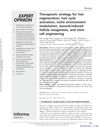
research Therapeutic strategy for hair regeneration: hair cycle activation, niche environment modulation, wound-induced follicle neogenesis, and stem cell engineering
The conclusion is that hair growth can be improved by activating hair cycles, changing the surrounding environment, healing wounds to create new hair follicles, and using stem cell technology.

research Pattern Hair Loss in Men
Male pattern hair loss caused by follicular miniaturization; early diagnosis and treatment can reduce psychological burden.

research Live imaging of stem cell and progeny behaviour in physiological hair-follicle regeneration
Hair regeneration needs dynamic cell behavior and mesenchyme presence for stem cell activation.
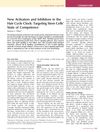
research New Activators and Inhibitors in the Hair Cycle Clock: Targeting Stem Cells’ State of Competence
The conclusion is that Fgf18 and Tgf-ß signaling could be targeted for hair loss treatments.
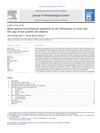
research Multi-layered environmental regulation on the homeostasis of stem cells: The saga of hair growth and alopecia
Environmental factors at different levels control hair stem cell activity, which could lead to new hair growth and alopecia treatments.

research The Effect of a 1550 Nm Fractional Erbium-Glass Laser in Female Pattern Hair Loss
Laser treatment increases hair density and thickness safely in women with hair loss.

research Adipocyte Lineage Cells Contribute to the Skin Stem Cell Niche to Drive Hair Cycling
Fat-related cells are important for initiating hair growth.
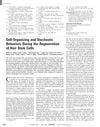
research Self-Organizing and Stochastic Behaviors During the Regeneration of Hair Stem Cells
Hair stem cell regeneration is controlled by signals that can explain different hair growth patterns and baldness.

research Fractional Photothermolysis Laser Treatment of Male Pattern Hair Loss
Laser treatment can stimulate hair growth for male pattern hair loss.

research Molecular basis of androgenetic alopecia: From androgen to paracrine mediators through dermal papilla
Male pattern baldness involves hormones and cell signals affecting hair growth.

research A multicenter, randomized, placebo-controlled, double-blind clinical trial of a novel formulation of 5% minoxidil topical foam versus placebo in the treatment of androgenetic alopecia in men
New 5% minoxidil foam effectively promotes hair growth and is safe for use.
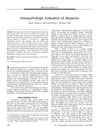
research Histopathologic Evaluation of Alopecias
The document concludes that accurate diagnosis of different types of hair loss requires careful examination of hair and scalp tissue, considering both clinical and microscopic features.

research Burden of Hair Loss: Stress and the Underestimated Psychosocial Impact of Telogen Effluvium and Androgenetic Alopecia
Hair loss causes stress and affects mental health; treatment and support needed.

research Finasteride in the treatment of men with androgenetic alopecia
Finasteride safely and effectively treats male pattern hair loss, but may cause reversible sexual issues and harm male fetuses.

research Fortnightly review: Male pattern androgenetic alopecia
Hair loss in men is common, treatable, but not curable.

research The psychological effects of androgenetic alopecia in men
Hair loss can cause low self-esteem, anxiety, and depression in men.
Related

research Use of human intra-tissue stem/progenitor cells and induced pluripotent stem cells for hair follicle regeneration.
Stem cells can help regenerate hair follicles.

research Live imaging of stem cell and progeny behaviour in physiological hair-follicle regeneration
Hair regeneration needs dynamic cell behavior and mesenchyme presence for stem cell activation.
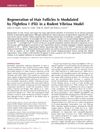
research Regeneration of Hair Follicles Is Modulated by Flightless I (Flii) in a Rodent Vibrissa Model
Flightless I protein affects hair growth, with low levels delaying it and high levels increasing hair length in rodents.
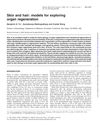
research Skin and hair: models for exploring organ regeneration
Skin and hair can help us understand organ regeneration, especially how certain stem cells might be used to form new organs.